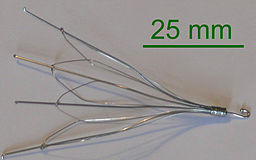 People who get medical implants don’t do so out of boredom. They get the surgery because they have a serious medical problem or they want to prevent one. Many of these implants have benefits for patients while some, in addition to doing some good, also can do great harm. The Cook IVC filter may be a medical implant that not only may do you no good but can also do great harm, according to a recent study published in the medical journal Annals of Surgery.
People who get medical implants don’t do so out of boredom. They get the surgery because they have a serious medical problem or they want to prevent one. Many of these implants have benefits for patients while some, in addition to doing some good, also can do great harm. The Cook IVC filter may be a medical implant that not only may do you no good but can also do great harm, according to a recent study published in the medical journal Annals of Surgery.
What is a Cook IVC filter?
The Cook IVC filter is a wire device that looks like a cone shaped net. It is manufactured by Cook Group, Inc. The IVC filters are surgically inserted into a major vein, the inferior vena cava (IVC), of a patient who is at risk for a pulmonary embolism (or PE, a blood clot that passes into a lung, which can be fatal). The filter is supposed to trap or break up blood clots coming from the lower or middle part of the body. On first look it appears to be a great idea. But many medical emergencies have resulted from implantation of these IVC filters.
Hundreds of lawsuits have been filed by those injured by Cook IVC filters and by the families of people who died because of them. The filters are often in patients too long; they can break up (with pieces going into the heart or lungs) or the entire filter can be pushed up near or into the heart, causing death or injuries.
Continue reading
 A “bellwether” is someone or something that leads others or shows what will happen in the future or is an indicator of trends. In the legal world a bellwether case is very important because it leads the way in how a large number of lawsuits may be litigated or settled.
A “bellwether” is someone or something that leads others or shows what will happen in the future or is an indicator of trends. In the legal world a bellwether case is very important because it leads the way in how a large number of lawsuits may be litigated or settled. North Carolina Product Liability Lawyer Blog
North Carolina Product Liability Lawyer Blog




